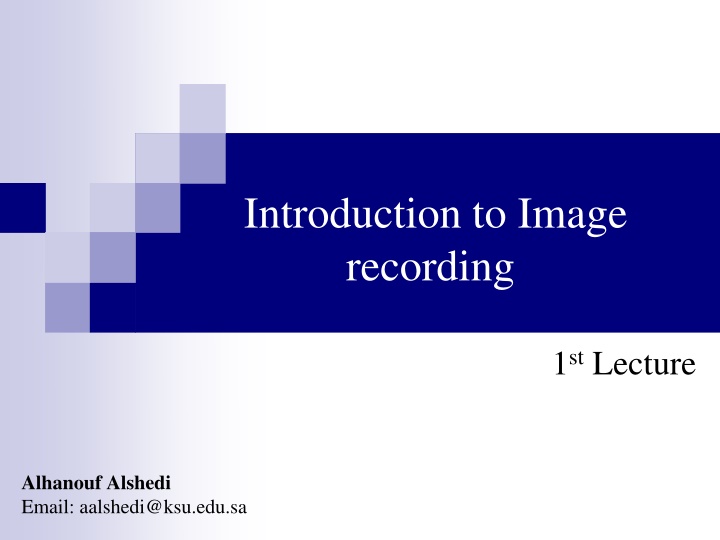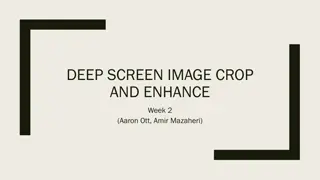
Image Recording: X-ray Discovery and Radiography
Explore the fascinating history of X-ray discovery by Roentgen in 1895, how X-rays differ from light rays, and the similarities and differences between radiographs and photographs in image recording techniques.
Download Presentation

Please find below an Image/Link to download the presentation.
The content on the website is provided AS IS for your information and personal use only. It may not be sold, licensed, or shared on other websites without obtaining consent from the author. If you encounter any issues during the download, it is possible that the publisher has removed the file from their server.
You are allowed to download the files provided on this website for personal or commercial use, subject to the condition that they are used lawfully. All files are the property of their respective owners.
The content on the website is provided AS IS for your information and personal use only. It may not be sold, licensed, or shared on other websites without obtaining consent from the author.
E N D
Presentation Transcript
Introduction to Image recording 1stLecture Alhanouf Alshedi Email: aalshedi@ksu.edu.sa
The discovery of X-rays -X-rays German was discovered by a physicist in1895 . -He named the new ray X-ray, because in mathematics "X" is used to indicated the unknown called Roentgen quantity . In his discovery Roentgen found that the X-ray through the tissue of humans leaving the bones and metals would pass Wilhelm Konrad Roentgen visible.
Cont. One of Roentgen s first experiments late in 1895 was a film of his wife Bertha's hand with a ring on her finger. The news of Roentgen s discovery spread quickly throughout the world.
X-ray X-rays are a form of electromagnetic energy just like light- rays and micro-waves are except that they travel with shorter wave length and with greater energy. X-rays have more energy than light-rays so they can penetrate and travel through materials that light-rays cannot.
Radiographs VS photographs similarity: Radiographic and photographic both often use some type of film to record the image. The difference is in how this image is recorded on the film .
In photography ,the image on the film is produced reflection of light. The amount of light that interacts with the film determines how the image appears on the film . due to
In Radiography We use a radiation source (x-ray tube) and a film which is placed on the opposite site of the object being imaged. The reflected to the film, but rather passes through the object and then strikes the film. radiation is not
The image on the film is dependent upon how much of the radiation pass through the object and to the film. Some materials like bone and metal stop more of the radiation from passing through The amount of material that the X-rays must travel through also affects how many X-rays reach the film. Differences in the type of material and the amount of material that the X-rays must penetrate are responsible for the details in the image.
X X - -ray films: ray films: The major recording media used in medical radiology is film - although the situation is changing with the introduction of new X-ray technologies in recent years. The film can be exposed by the direct action of X-rays, commonly the X-ray energy is converted into light by intensifying screens and this light but more is used to expose the film. Go to fullsize image
Types of radiographic films There are tow main groups of films, according to the effect towards light : - Non screen or direct exposure film -Film expose to x-ray only such as dental films. - Screen film -Film expose to light and x-ray such as general radiology films. Film are also two types according to manufacturer Single emulsion such as : Mammographic films, duplication film, subtraction films, radiographic films used in CT, MRI - and nuclear medicine. Double emulsion such as dental film. -
Advantage and disadvantage of single and double emulsion films Single emulsion films Double emulsion films
Common sizes of medical x-ray films The following is example for some of the medical common sizes used in medical radiology field: 31x41 mm 57x76 mm 18x24 cm 24x30 cm 30x40 cm 35x35 cm 35x43 cm Go to fullsize image
Any Question? Thank You






















